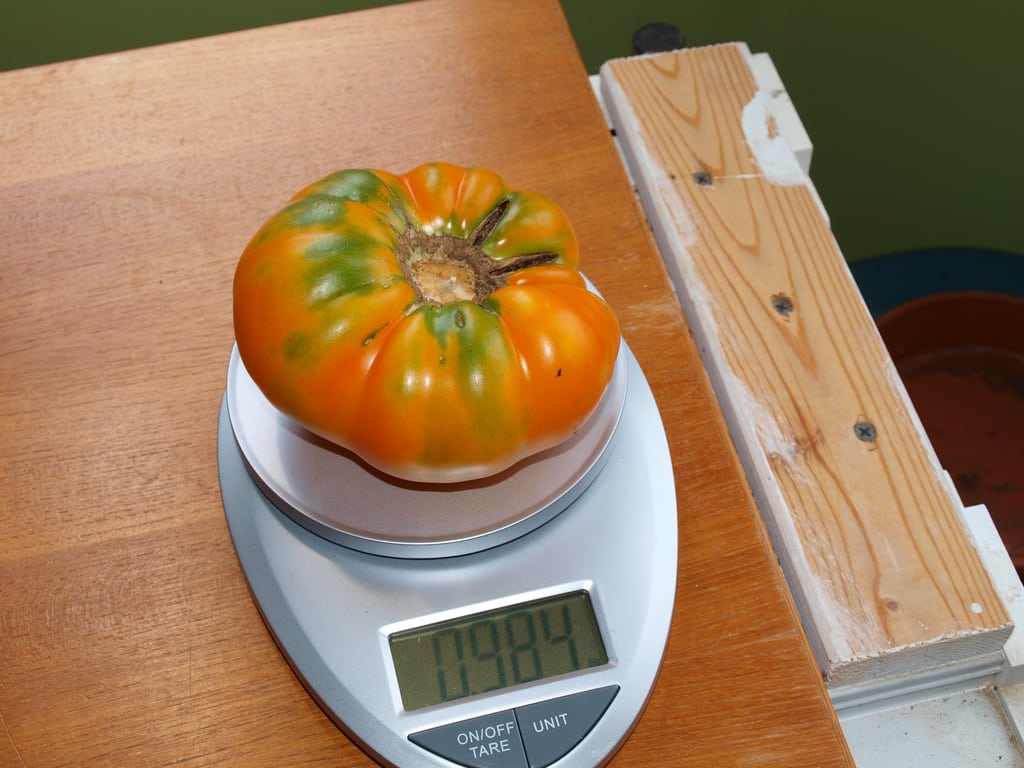Kellogg’s Breakfast Tomato Care – Growing A Kellogg’s Breakfast Plant


The classic example of a tomato seems to be a plump, red specimen but you have to give the orange hued tomato, Kellogg's Breakfast, a try. This heirloom fruit is a spectacularly flavored beefsteak tomato. Kellogg's Breakfast tomato information reveals that the plant originated from Darrell Kellogg and has little to do with the cornflake creator of cereal fame. Try growing a Kellogg's Breakfast tomato and liven up your salads with this fiery toned fruit.
Kellogg's Breakfast Tomato Information
There must be hundreds of heirloom tomatoes available. One such, Kellogg's Breakfast, is a tasty, unique, orange fruit that is ripest when the color deepens to a classic carrot color. The plants produce mid-season and have prolific fruits for weeks. One of the more desirable heirloom tomatoes, Kellogg's Breakfast is an indeterminate plant requiring staking. Big, 14 ounce (397 g.) fruits and meaty, almost seedless flesh characterize the Kellogg's Breakfast tomato. Plants grow 6 feet (2 m.) or more in height with classic green tomato leaves and rambling stems. The fruits are solid with firm flesh, making them excellent slicing tomatoes but they also translate well to sauces and stews. The plant was discovered by Mr. Kellogg in his own garden. He liked the fruit so much he saved the seed and the rest is history. Today, gardeners can find the heirloom through many sources.
Growing a Kellogg's Breakfast Plant
In most zones, it is best to start seeds indoors six to eight weeks before the last expected frost. Sow seeds just barely under a cover of soil and keep flats moderately moist. It may be helpful to keep a clear cover over the flats and place them on seed germination mats. Remove the covers at least once per day so excess moisture vapor can escape. This can prevent damping off and soil gnats. Germination is generally 7 to 21 days after planting. Harden plants off for outdoor transplant after seedlings have at least two sets of true leaves. Set plants 2 feet (61 cm.) apart. These are full sun plants that need at least eight hours of sunlight per day to produce well. Protect young plants from pests and keep weed competitors away from seedlings.
Kellogg's Breakfast Tomato Care
Train plants upward to prevent fruit from touching the soil and encourage light and air flow using stakes or cages and soft ties. Feed plants with a 4-6-8 formula every two weeks after plants have become established outdoors. This will promote blooming and fruit set without excess green production. You can expect some pest issues such as aphids, many types of larvae, spider mites, whiteflies, and stink bugs. Protect plants with horticultural oil. Avoid watering overhead as this can promote certain fungal diseases. Harvest tomato fruits when they are plump and heavy with deeply orange skins.
Sign up for the Gardening Know How newsletter today and receive a free copy of our e-book "How to Grow Delicious Tomatoes".

Bonnie Grant is a professional landscaper with a Certification in Urban Gardening. She has been gardening and writing for 15 years. A former professional chef, she has a passion for edible landscaping.